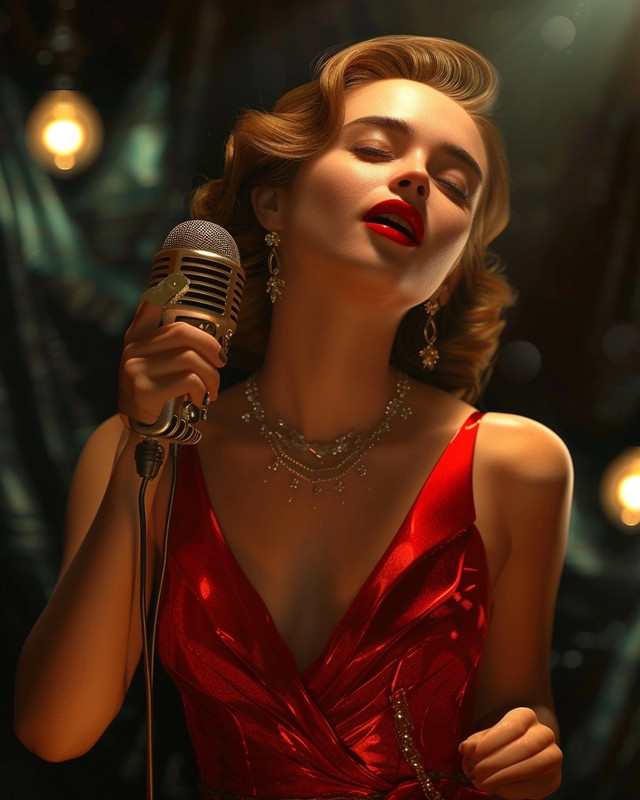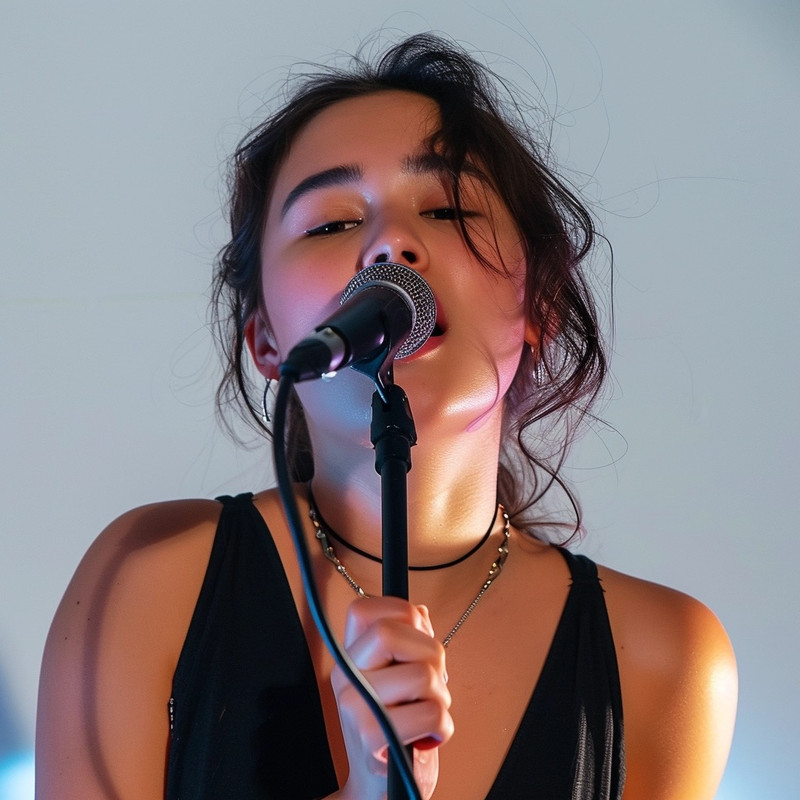

The knob can be used to adjust the mic gain, headphones volume and audio blending. To find out which microphone to buy, check out the best studio microphones on SoundShockAudio.. But what stands as the paramount studio microphone? It had a lot of low end and a top that was clear with a natural roll-off, as opposed to the over-emphasized brightness of some condensers.
If you want a more authentic sound, it's best to play your guitars and basses out loud. Cardioid mics pick up sound predominantly from the front, reducing noise from the sides and rear; this makes them excellent choices for isolating a particular sound source in noisy environments.
Furthermore, technological advancements have birthed USB microphones that marry convenience with quality—an attractive option for home studios or traveling artists seeking simplicity without sacrificing sonic integrity. Ultimately though, when selecting your sonic sword for battle in today's competitive auditory arenas—the Neumann U87 stands tall as an exemplar. Lead
These elements work harmoniously to absorb excess sound waves, ensuring that what reaches the microphone is pure and untainted by rogue frequencies. They carry an analog signal, free from digital compression, ensuring that every subtle nuance of a performance is captured with utmost fidelity.
Sennheiser deserves a big thank you for this simple idea. Modern advancements have fortified these once-delicate devices against higher sound pressure levels and transient spikes, broadening their versatility in various recording scenarios. Mics with cardioid patterns are sensitive at the front, and do not pick up sounds from behind.
The Neumann U87, although steep in price, stands as an industry titan, offering unparalleled clarity that has graced countless hit records. These originals have a natural sound that is highly praised and are coveted because they can capture the natural beauty in vocal performances, room noises, and other far miking methods.
A good quality multi-pattern mic allows flexibility in various streaming scenarios—be it a solo session or interacting with multiple guests. Despite its relatively modest price point, this dynamic microphone has earned accolades for its robust build and adaptability across various recording scenarios.
This knowledge is a cornerstone for audio professionals who aim to capture crystal clear audio. While omnidirectional mics indiscriminately capture sound from all angles, bidirectional or cardioid options offer control over environmental noise intrusion—crucial for pristine studio work.
It delivers a natural sound with pronounced low-end response. There's usually nothing unusual about a large diaphragm mic. Ultimately, whether you choose the road less traveled by opting for XLR's superior clarity or embrace the straightforward path with USB's accessibility will shape your sonic landscape.
They offer an exceptional option for artists seeking to infuse their tracks with professional-level clarity suffused with a touch of vintage charm—an auditory bridge between past elegance and present technological innovation.


By suspending the microphone in a cradle of elastic bands or cords, they isolate it from physical disturbances. It can certainly handle these applications, but the MV7 has been designed as a microphone for speech. If you want to reduce unwanted noises in your recordings, consider purchasing a pop filter or shock mount.
Vintage 414s are considered the best condenser mics for studio use. You can read about the studio recording mics listed in the article above.
By doing so, it ensures that our microphone—the discerning artist—receives only the purest inputs. Cardioid mics are great at isolating the source sound while minimizing background noise—which is ideal for untreated room environments—whereas omni-directional mics capture everything around them, offering a more natural ambient experience if desired.
Firstly, choose a quiet location to set up your studio. Check out our guide on the best cheap mics if your budget is limited.
The output of a powerful sound system is worthless if it doesn't deliver, and in this case the sound does. These mics completely block sound from the sides. Conversely, condenser microphones are celebrated for their sensitivity and wide frequency response, which renders them perfect for vocal recordings and subtle acoustic instruments.
In conclusion, selecting a studio microphone with appropriate connectivity choices can significantly elevate your recordings. In summary:- Dynamic mics handle high SPLs well.- Condenser mics capture detail exquisitely.- Ribbon mics impart a smooth vintage vibe.- Multi-pattern mics offer outstanding flexibility.
The best recording microphones by RODE, Shure and Audio-Technica are covered! Cardioids excel in isolating sounds from one direction but beware of rear lobe sensitivity in supercardioids that may catch unwanted reflections.
Whether you're starting out or upgrading your arsenal, these microphones stand ready to transform whispers into roars and breaths into melodies—etching moments into sonic legacies.- Brief review of each recommended microphone’s features and suitability for specific recording scenariosSelecting the ideal microphone for studio-quality sound is a nuanced task that necessitates an understanding of the plethora of options available and their respective features. The dance between microphone and source is delicate, where each step is meticulously choreographed to unveil a symphony of clarity and depth.

Tube microphones can be noisy. However, some mics offer variable patterns for greater flexibility—omnidirectional for ambient recordings or figure-eight for duets and interviews. Understanding polar patterns will help you place your microphone to capture vocals effectively and reduce background noise.
Elgato Wave: 3 has been used by musicians, podcasters and gamers. It's typical for high-end condenser microphones that require phantom power—a voltage supplied through the cable—to operate correctly.
This latest model has a USB interface which eliminates the need for an audio interface. This is likely why artists such as Ariana Grande and Norah Jones are so fond of this microphone.
Microphones differ in terms of how they record, how they direct the sound and how they connect with other recording equipment. The Aria has a noticeable presence boost, but it's not sibilant.
The smaller Aston mic, the Origin, is a fixed-pattern (cardioid), condenser. In contrast, high-end ribbon microphones like the Royer R-121 are lauded for their natural sound reproduction but come at a premium that may be prohibitive for budget-conscious musicians. Ultimately, attaining studio-quality sound hinges not only on having exceptional equipment but also on mastering its employment within spatial contexts.
At first glance, frequency response defines how various pitches are captured, with a vast range indicating versatility across multiple applications. He takes us back to when the VAGABOND 88 Wireless Microphone was released.
Shure has made people sound amazing for almost a century. This makes these microphones out of reach of the average studio owner and only possible for small home studios.
Understanding these dynamics is vital for audio professionals who aim to achieve pristine recordings reflective of their artistic visions or production objectives. This bundle includes everything you need to start.
Paul McCartney has been seen using a variety of microphones throughout his career, both on stage and in the studio. Notably, he has frequently used the Shure SM58 for live performances, a microphone renowned for its durability and sound quality. In studio settings, he has been known to use the Neumann U47, a vintage microphone prized for its warmth and clarity.
Johnny Cash, throughout his career, used a variety of microphones, but he is most famously associated with the Shure SM58, a staple for live performances due to its durability and sound quality. Additionally, for studio recordings, he often used the Neumann U47, known for its warmth and clarity, which suited his deep, resonant voice perfectly.
Joe Rogan uses the Shure SM7B Vocal Dynamic Microphone for his podcast, "The Joe Rogan Experience." This microphone is popular among podcasters and broadcasters for its ability to capture clear, smooth, and natural sound while minimizing background noise.
The Neumann U87 microphone is highly popular due to its exceptional sound quality and versatility, making it suitable for a wide range of recording applications, from vocals to instruments. Its durability, combined with a rich, detailed sound profile that captures nuances with clarity, has made it a staple in professional studios worldwide. Additionally, its reputation and consistent performance over the years have cemented its status as a go-to microphone for both seasoned engineers and recording artists.
John Mayer, known for his meticulous approach to tone and recording quality, has been seen using a variety of high-end microphones in the studio. Notably, he has used the Neumann U67, a vintage tube microphone renowned for its warmth and clarity, for recording vocals and acoustic guitars. However, it's important to note that Mayer might use different microphones depending on the specific sound he's aiming for in each recording session.